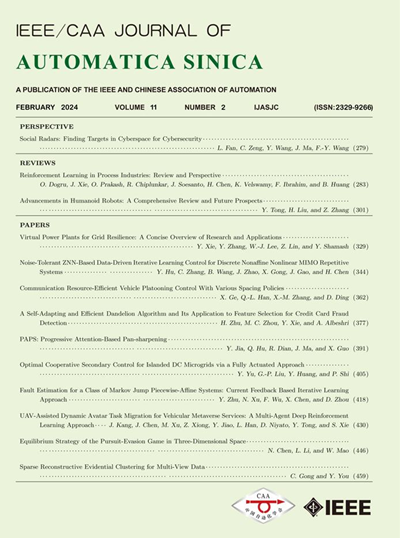$\mathrm{E}^{2}\text{AG}$: Entropy-Regularized Ensemble Adaptive Graph for Industrial Soft Sensor Modeling
IF 19.2
1区 计算机科学
Q1 AUTOMATION & CONTROL SYSTEMS
引用次数: 0
Abstract
Adaptive graph neural networks (AGNNs) have achieved remarkable success in industrial process soft sensing by incorporating explicit features that delineate the relationships between process variables. This article introduces a novel GNN framework, termed entropy-regularized ensemble adaptive graph$\ mathm {E}^{2}\text{AG}$:基于熵正则化集成自适应图的工业软传感器建模
自适应图神经网络(AGNNs)通过结合描述过程变量之间关系的显式特征,在工业过程软测量中取得了显着的成功。本文介绍了一种新的GNN框架,称为熵正则化集成自适应图$(\mathbf{E}^{\mathbf{2}}\mathbf{AG})$,旨在提高agnn的预测精度。具体来说,这项工作开创了一种基于镜像下降的新型AGNN学习方法,这对于确保训练过程的效率至关重要,从而保证学习到的图自然地符合gnn消息传递固有的行归一化要求。随后,在多头自注意机制的激励下,在该框架内严格检验了集成agnn的训练,在学习目标中加入了熵正则化项,以确保学习图的多样性。然后对模型的体系结构和训练算法进行了简要的总结。最后,为了确定所提出的$\mathbf{E}^{\mathbf{2}}\mathbf{AG}$模型的有效性,在实际工业数据集上进行了大量的实验。结果表明,$\mathbf{E}^{\mathbf{2}}\mathbf{AG}$在工业软测量应用中的优越性。
本文章由计算机程序翻译,如有差异,请以英文原文为准。
求助全文
约1分钟内获得全文
求助全文
来源期刊

Ieee-Caa Journal of Automatica Sinica
Engineering-Control and Systems Engineering
CiteScore
23.50
自引率
11.00%
发文量
880
期刊介绍:
The IEEE/CAA Journal of Automatica Sinica is a reputable journal that publishes high-quality papers in English on original theoretical/experimental research and development in the field of automation. The journal covers a wide range of topics including automatic control, artificial intelligence and intelligent control, systems theory and engineering, pattern recognition and intelligent systems, automation engineering and applications, information processing and information systems, network-based automation, robotics, sensing and measurement, and navigation, guidance, and control.
Additionally, the journal is abstracted/indexed in several prominent databases including SCIE (Science Citation Index Expanded), EI (Engineering Index), Inspec, Scopus, SCImago, DBLP, CNKI (China National Knowledge Infrastructure), CSCD (Chinese Science Citation Database), and IEEE Xplore.
 求助内容:
求助内容: 应助结果提醒方式:
应助结果提醒方式:


